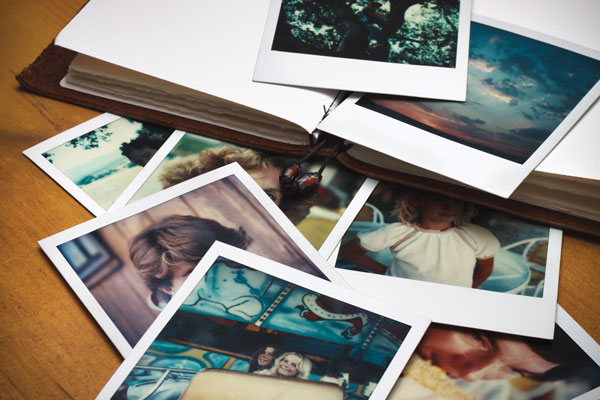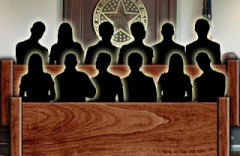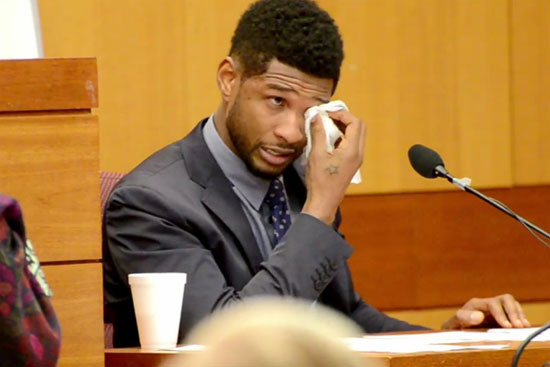Low-impact collision: Using experts to maximize your client’s recovery
Minimal damage to the vehicle does not mean you should concede minimal injury to the client
Jurors and insurance adjusters are only supposed to compensate our clients based on their harms and losses. Let’s be honest though: everyone considers how our clients are injured. Selling injuries to strangers is easy enough when you have a high-speed crash, a 30-foot fall from an unsupported roof, or a fall down an elevator shaft not up to code. What do we do, however, when we have a low-to-moderate speed car crash causing our client a great deal of harm? This article will help you confront the issues that go hand-in-hand with these types of cases.
A small investment in the case makes a big difference
Defense attorneys are trained to purchase favorable biomechanical testimony to contest personal injury claims. (See, e.g., Rush, Claire, The Use of Biomechanical Experts Defeating Low-Impact Vehicle Claims, DRI For the Defense, (2013) 55 No. 10). They consider victims of low-impact crashes “shameless” for making “trumped up” claims for injuries. (Ibid.) In short, they don’t believe a low-impact crash can hurt anyone (i.e., drinking the Kool-Aid). To the contrary, recent studies funded by the Center for Disease Control prove that a slew of spinal injuries can occur in collisions with a change in velocity (“Delta V”) as low as 6 miles per hour. (See Ivancic, Paul, Panjabi, Manohar, and Ito, Shigeki, Cervical Spine Loads and Intervertebral Motions During Whiplash, Traffic Injury Prevention (2006) Issue 7:4, 389-399). Consequently, you can prove your client was injured with science.
Use these studies and a biomechanical expert to poke holes in the defense. When presented with an impact that doesn’t “look” that bad, invest in a biomechanical expert early on to act as a consultant. An initial few thousand-dollar investment will go a very long way. Your expert can give you a quick assessment of the collision and tell you if the Delta V is enough to support your client’s injuries. They can point you in the direction of applicable studies. At the least, they can act as consultants to help you battle any defense biomechanical testimony.
Typically, the defense cites biomechanical studies from the 1980’s and 1990’s. Insurance companies funded these studies for one purpose: to dispute injuries from car crashes. Defense experts routinely bury their heads in the sand in regard to the more recent studies, and cite the same old rhetoric over and over again. By using a biomechanical expert, you can prove to the defense – or the jury should it go that far – that you used science to prove your client was seriously injured. In contrast, you have a defense expert relying on stale, insurance-funded studies and photos of property damage. Therefore, hiring a biomechanical expert early on will put you ahead of the game and prepare you to counter shiesty defense tactics.
Thoroughly prepare your client for his or her deposition
You should prepare your client for his or her deposition in anticipation of taking the case to trial. (For Discussion, see Deposition Preparation – Counseling the Deponent – The Pre-Deposition Meetings (2014) 2 Litigating Tort Cases § 18.12). Do not let your client get deposed with little-to-no preparation, thinking their case will settle! Your client may leave out imperative information about damages suffered. Even worse, they may not have talked specifically about their body movement at impact. Don’t be the attorney who gets clowned at trial because you failed at working up your case.
First, review the injuries your client is claiming and talk with your biomechanical expert. He or she should give you a better understanding of how these injuries occur. (See Foley, Thomas, Preparing for Your Low Impact Mild Brain Injury Case (2008) Ann. AAJ-CLE 1023. [discussing the importance of educating jurors on mechanics of movement]). If your client has spinal irritation on the left side of his or her body, it would make sense your client was leaning to the right at the time of impact. If your client has a torn labrum, it would make sense if he or she braced for impact at the time of the collision. In short, make sure the body movement supports the injuries. It will help with your “science” theme of proving the injuries to the jury, straight from your client’s mouth.
Second, make sure your client discusses all their damages. They should talk about each and every problem stemming from the incident. They should disclose all their damages witnesses (discussed below), but make sure they do it in a mundane fashion. Adjusters, defense attorneys, and juries don’t like people who get injured and give up, or have a “woe is me” attitude. Simply put, have them discuss how their life has changed. It helps you understand your client better and potentially settle your case, all the while preparing for trial. If indeed there is a trial you will be over-prepared, which is always a good thing.
Pre-trial discovery
The most important witnesses, in terms of general damages, are damages witnesses. These are people who are close to your client: friends, loved ones, and co-workers. They can tell your client’s story from an outside perspective, and you won’t run into a “woe is me” issue by keeping your client on the stand forever. These witnesses are more important than your client, your experts, or even you. As such, it is essential they are not excluded at trial.
Disclose your damages witnesses early. Produce the names, addresses, and telephone numbers of everyone who may testify as a damages witness in your trial. Supplement your Form Interrogatories, series 12, so the defense is on notice of these individuals. Most of the time, they won’t depose them, but if they do, even better! Their depositions may help you settle your case. Either way, disclosing them early solidifies your ability to use them at trial.
Also disclose video and photographs of your client from before the injury. Meet your client at their house and get to know them. Bust out the photo album to see how your client’s life was before the incident (or hijack their Facebook for photos). Nothing is more powerful in trial than showing how happy and active your client used to be. This includes how much they loved their hobbies, families, and work. Have your damages witnesses use the photographs to tell your client’s story at trial. It builds more credibility coming from them than your client. Accordingly, you preserve your client’s integrity by not engaging in a “woe is me” story.
Defense expert depositions
When dealing with light-to-moderate impact cases, you will likely be dealing with two defense experts: a biomechanical expert and a medical doctor. It is important to become familiar with these experts before you take their depositions. Get their other depositions on similar topics. Get out all the bias information, their opinions and the bases for the opinions, as well as their concessions.
Defense biomechanical expert
Prior to the deposition, ask the expert for all journals or articles they are relying on to come to their opinions. Get the materials to your expert ahead of time to see how you can pick these apart. Most of the time, the expert’s studies are not peer-reviewed or accepted by the scientific community in any fashion. If you study the bases of their opinions, you can likely get concessions regarding the weaknesses in the studies they use. This enables you to prepare for a very interesting motion in limine come trial time.
Become a mini-expert in the defense expert’s field. Take a break during their deposition and consult with your expert again. Attempt to get the all-important concessions about major injury causation. The defense biomechanical expert will agree they are not a medical doctor, and cannot say whether your client was even injured. These experts are only there to tell the jury the probability of injury. Even then, statistics cannot predict whether someone will be injured in low-to-moderate speed collisions. They will agree it is possible your client sustained all the injuries he or she complains of. Juries need to hear defendant’s experts say it is possible. Legal standard or not, they just want to know. In the end, these experts are just giving statistics to the jury that may not fit your client’s situation. As such, you need to work around these opinions and give the jury what they need to hear.
Defense medical doctor
Remember that prior to ending your deposition, you must get all the information to properly cross the doctor at trial. (See Evid. Code, § 721; People ex rel Dep’t of Pub. Works v. Wasserman (1966) 240 Cal.App.2d 716, 734 [permitting wide latitude for cross-examination of an expert witness on their knowledge, judgment, and bias in regards to the validity of their opinions]). This is extremely important for general-damages purposes. If you can get their expert to agree a pinched nerve in the spine and subsequent treatment options are very dangerous, it goes a long way. Regardless of whether an expert agrees on causation, the jury will know your client is in a dire situation.
Most importantly, you should get their experts to concede your client will likely be in pain for the rest of his or her life. Some kind of pain or restriction, any kind of pain or restriction! Ask their experts whether your client can do specific things they used to enjoy. Will they ever be able to run marathons, surf, or pick up their grandchildren without pain? Can they throw an 89 MPH slider down and away to a right-handed batter? Whatever! You get the point. Getting these concessions will help you in front of the jury.
At trial, try to start your cross by getting the doctor to impeach himself. Some of the most powerful cross-examinations begin with an expert saying something different on the stand than what they said during their deposition. It will also permit you to come back in your closing and say, “The first question I asked him, he lied!”
As for concessions, you’ll want them at the end of your cross-examination. Let them tell the jury one more time about all the things this incident took from your client. Nobody cares about their purchased opinions on causation or medical bills. Those opinions are not changing and you can attack them in other ways. In other words, turn them into your damages witnesses!
Nobody?!
Sometimes, the defense will not designate a biomechanical expert. In that situation, file a motion in limine to exclude evidence of property damage. Argue the property damage is only relevant if someone can explain it in relation to the force of the collision.
Trial Tactics – a few basics
• Voir dire
Attack your weaknesses head-on in jury selection. Ask if anyone has been hurt in a low speed crash, or if they know anyone who has. Get them talking, and they will surprise you! Ask if anyone will automatically think someone cannot be hurt if there isn’t a lot of property damage. Again, get them talking: if you find jurors who think otherwise, you have a good shot of getting them off the jury for cause. Once the judge dismisses them, it will set in with other jurors that they need to focus on the evidence and be fair. Heck, maybe even the judge knows people can get seriously injured from these types of crashes! Talk to the jury about the injuries your client has from this type of crash. Don’t be shy about it, or act like it is a weakness in your case. You must let the jury know right away there is not a lot of property damage, but ask them to follow the science of injury causation.
• Opening argument
Push the same themes during opening that you did in jury selection. In this type of case, you should have a science theme. In contrast, tell the jury that defendant’s theme is that low property damage equates to no injury. Thank them for being attentive and focusing in on the science rather than the rhetoric of the defense attorney. You can ask your expert, “The defense attorney can wave around property damage photographs all day, but you just testified to the science, right?” The defense attorney will look like he’s turning a blind eye to proof of the injuries. Consequently, the jury will put all the weight into scientific testimony and scoff when defense attorney waves pictures around during the entire trial.
Also, try to use a PowerPoint or some sort of visual aid. Courts have broad discretion to allow visual aids during opening statement. (People v. Green (1956) 47 Cal.2d 209, 215 [disapproved on other grounds in People v. Morse (1964) 60 Cal.2d 631]). A trial court may even allow the use of an aid that is itself inadmissible; these are admissible at the discretion of the court, as long as they fairly serve a proper purpose. (See State v. Sucharew (Ariz. Ct. App. 2003) 205 Ariz. 16, 20-21 [66 P.3d 59] [permitting use of PowerPoint showing a title page, photographs of the scene, vehicles with headings and descriptions, a map, and a listing of a party’s physical symptoms]). Using graphics will shorten the time of opening statements and is a much more credible approach to detailing what the evidence will show. Thus, do your best to convince the judge to let you use them!
• Witnesses on general damages
Have others testify about your client’s damages. We almost always call our client last (or close to it). That way, doctors have already laid foundation for their injuries, life-care planners for their future needs, and damages witnesses about how their lives have changed. Furthermore, all your evidence will pretty much be in: photographs of the crash, medical illustrations, bills, and videos. Using damage witnesses to testify to your client’s damages will enable them to “objectively” verify your client’s pain and suffering. That way, you avoid the “woe is me” story.
Then, keep your client’s direct very simple. It should be to the point, impassive, and not repetitive. Thirty minutes is all you need for them to tell their abbreviated story. They don’t need to retell it all – damages witnesses and doctors have already done so. If the defense wants to cross your client for two hours, it’s a gift! The jury will hate them for wasting their time and badgering a victim. Therefore, you will preserve your client’s integrity and the defense will look like the bad guy.
• Closing argument
In closing, educate the jury on the law. Talk about jury instructions and how they apply to the facts of your case. In a light-to-moderate impact, you must discuss instructions about aggravation of pre-existing injury and unusually susceptible plaintiff. (CACI 3927, CACI 3928). Explain to the jury what these mean and why they are in place: to protect everyone in the community, young or old. In the end, you can overcome the negative implications of a “light impact” crash by re-framing the case so the jury knows it’s all about science. In the end, they won’t even consider the property damage photographs!
Additionally, use a PowerPoint or some sort of visual presentation. Using visuals enhances the effectiveness of your closing argument and establishes credibility with the jury. (See Wegner, Fairbank, Epstein & Chernow, Cal. Prac. Guide: Civil Trials & Evidence, ¶ 6:184 (The Rutter Group 2012)). Graphics are the key to simplifying and presenting evidence to the jury in a concise manner. They’ll help you reason with the jury as to why they should use your numbers to fairly compensate your client. Show them damages photographs and videos again. Explain what was taken from your client, and how valuable it is.
Finally, educate the jury on deliberations. If you have gained credibility throughout trial, the jury will use your damages numbers for guidance. Tell them to start talking about your numbers, and if they for some reason disagree, to move down (or hopefully, up) from there. Tell the jury that only nine out of twelve jurors need to agree on a category, then they can move on. This will get them thinking about finishing deliberations and getting back to their family and friends. Consequently, the verdict will be closer to your numbers – they may even give you everything you ask for!
Robert T. Simon

Robert T. Simon is co-founder of the Simon Law Group and acts as the primary trial attorney. He is a proud member of ABOTA, CAALA, CAOC, CASD and OCTLA, is a past president and active board member of Los Angeles Trial Lawyers’ Charities.
Greyson M. Goody

Greyson Goody is a partner at Goody Law Group and the Simon Law Group. He attended Thomas Jefferson School of Law in San Diego. There he met fellow Simon Law Group attorneys Brandon Simon, Sevy Fisher, Evan Garcia, and Travis Davis as well as his wife, Taly. Greyson is a proud member of the Consumer Attorneys Association of Los Angeles, Consumer Attorneys of California, Orange County Trial Lawyers Association, and the American Board of Trial Advocates.
Copyright ©
2026
by the author.
For reprint permission, contact the publisher: Advocate Magazine



